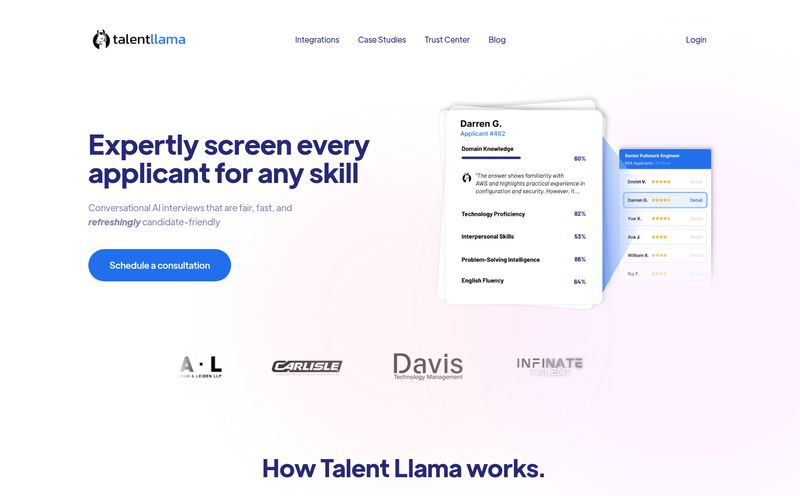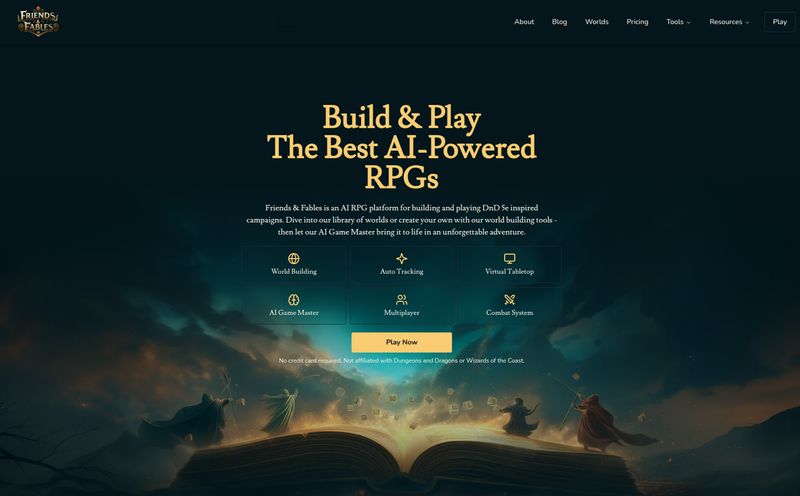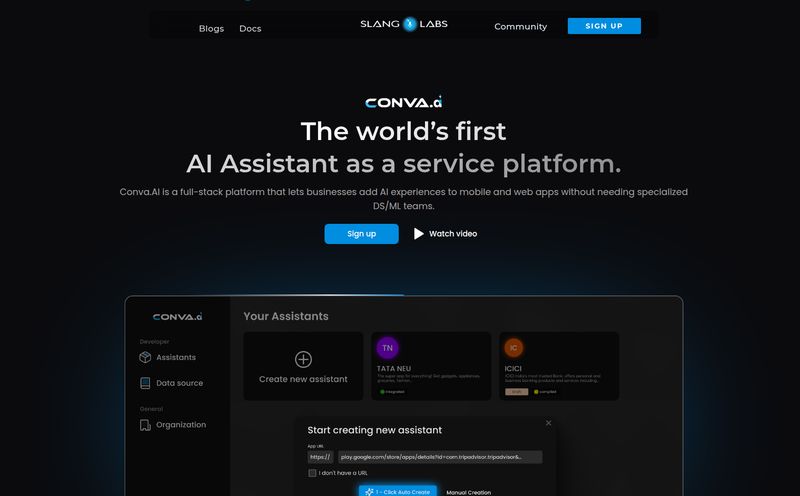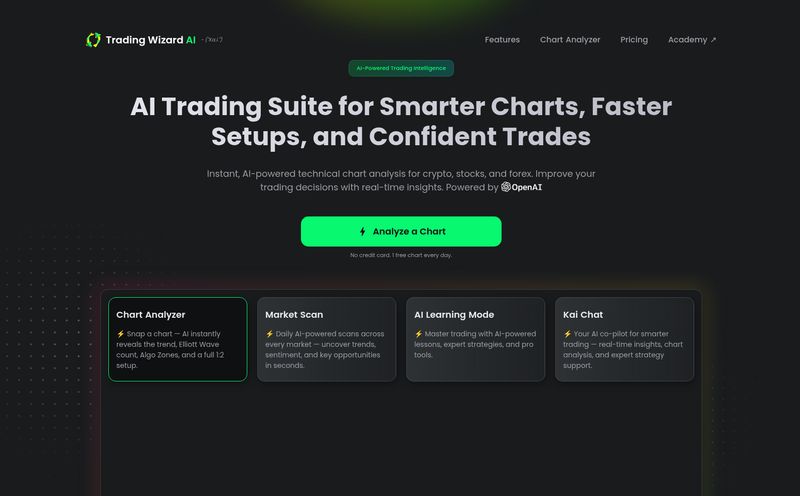If you’re a parent, you’ve been there. It’s 7 PM, you're trying to make dinner, the dog needs to go out, and your child has just hit you with a question about photosynthesis or the Magna Carta that sends your brain into a complete tailspin. You either bluff your way through it or you spend the next ten minutes frantically Googling on your phone. We’ve all done it.
The world of education is changing, and honestly, it's about time. For years, we've been talking about the potential of tech in the classroom. And now, with the explosion of AI, we're starting to see tools that aren't just digital flashcards. We're seeing things that feel… different. More personal. That’s where a new platform called Teddy AI caught my eye.
It’s not just another app. It’s positioned as a conversational AI study buddy. A friend. And as someone who has spent years watching trends in traffic and engagement, I can tell you that the word “friend” is a whole lot more engaging than “tool.”
So, What Exactly is Teddy AI?
At its heart, Teddy AI is an interactive app for children, available on the Google Play Store. But calling it just an “app” feels like a bit of an understatement. Think of it less like a stern digital teacher and more like a fluffy, all-knowing sidekick for your kid. Its main gig is to help children revise school topics and to answer those endless, wonderful, and sometimes baffling questions they come up with.
The whole experience is built around a conversational interface. Kids don’t just tap multiple-choice answers; they talk to Teddy. They can ask it to explain a concept in a simpler way or just chat about something they're curious about. It’s learning through dialogue, which is how kids naturally learn about the world anyway. It feels less like a test and more like a chat with a very, very smart teddy bear.
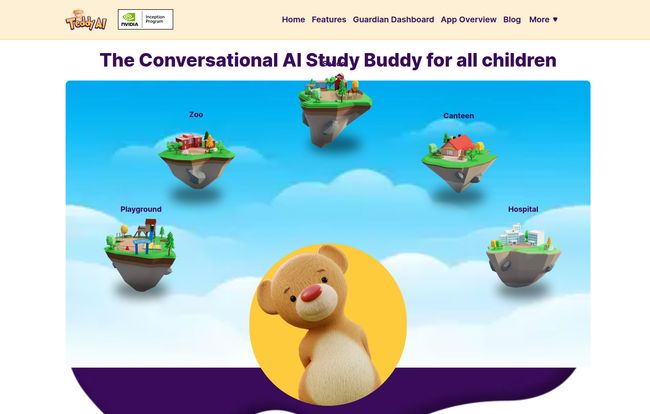
Visit Teddy AI
The Features That Genuinely Impressed Me
I’ve seen a lot of ed-tech platforms. A lot. Most are just glorified PDFs with a few animations sprinkled on top. But digging into what Teddy AI offers, a few things really stood out.
A Truly Conversational Partner
This is the core of it all. The two-way conversational AI. It’s not just about spitting out pre-programmed answers. The platform uses machine learning to understand and adapt to the child’s learning style. If a kid is stuck, Teddy can rephrase, offer hints, or approach the topic from a different angle. It’s patient in a way that, let’s be honest, we parents can’t always be after a long day.
Making Learning a Game, Not a Chore
The term gamification gets thrown around a lot in the tech world, sometimes to the point of being meaningless. Here, it seems to be thoughtfully integrated. The images on their site show different worlds like a “Playground” or a “Hospital,” suggesting that learning modules are themed adventures. Kids can earn rewards and feel a sense of progression. This taps into intrinsic motivation, which is way more powerful than just nagging them to do their homework. A real game changer.
The Guardian Dashboard: Keeping Tabs Without Hovering
Okay, this is huge for parents. Teddy AI includes a web-based Guardian Dashboard. From here, you can see your child's progress, identify areas where they might be struggling, and even create personalized lessons for them. I’ve always felt the best educational tools are the ones that foster a partnership between the parent and the technology. The dashboard is like having a secret window into their learning world, without the creepy 'Big Brother' vibe. It gives you the information you need to support them effectively. You can see their progress and then have a real-world conversation about it.
A Special Focus on Neurodiverse Learning
This is the feature that I think is most important. The website specifically calls out “Conversational AI for neurodiverse learning.” This is more than just a buzzword. For children with different learning needs, such as ADHD or those on the autism spectrum, a standard classroom setting can be overwhelming. An AI buddy like Teddy offers a judgment-free zone. It’s endlessly patient, can repeat information as many times as needed without frustration, and can tailor its communication style. This kind of personalized support can be absolutely transformative.
"I really like that Teddy is a safe spot and that I can talk to Teddy and he talks back." - A quote from a kid on their website that pretty much sums it up perfectly.
My Honest Take: The Good, The Bad, and The Fuzzy
No tool is perfect, and as an SEO and tech analyst, I always look for the complete picture. The things I love about Teddy AI are pretty clear: the engaging interface, the incredible potential for personalized learning, and especially that focus on neurodiversity. The Guardian Dashboard is a massive plus for any parent who wants to be involved but not overbearing.
However, there are a few things to keep in mind. Right now, it seems to be exclusive to the Google Play Store, so iOS families are out of luck for the moment. Also, the effectiveness of any tool like this will naturally vary from child to child; what works for one might not click with another. That’s just the reality of education. But the biggest question mark for me is the cost.
The Elephant in the Room: The Price Tag
So, how much does this amazing AI buddy cost? That’s the million-dollar question. I scoured their website, and the pricing information is conspicuously absent. Even the link for their pricing page seemed to be down when I checked, leading to a “Page Not Found” error. This happens, websites have glitches, but it leaves a big hole in the information.
Will it be a one-time purchase? A monthly subscription? A freemium model with in-app purchases? We don't know yet. This is a crucial piece of the puzzle for parents making a decision, and I hope they make this information clearer soon. For now, it seems the best bet is to download it from the Play Store and see what the app itself says.
The Broader Conversation About Screen Time
I know what some of you are thinking. “Great, another app to get my kid addicted to a screen.” I get it. The debate around screen time is heated. But I've always believed that we need to shift the conversation from the quantity of screen time to the quality. There’s a world of difference between a child passively watching YouTube shorts for two hours and a child spending 30 minutes actively engaging with a tool that teaches them about the solar system in a fun, interactive way. According to the American Academy of Child & Adolescent Psychiatry, the focus should be on creative and quality content. Teddy AI seems to fall squarely into that “quality content” category. It’s active, not passive. Creative, not consumptive.
Final Thoughts: A Glimpse into the Future of Learning?
So, is Teddy AI the silver bullet that will solve all our homework woes? Probably not. No single tool ever is. But is it a fantastic, innovative, and thoughtfully designed platform that could make a real difference for many children? Absolutely. I’m genuinely excited by its potential.
It represents a shift toward more human-centric technology in education. It’s not about replacing teachers or parents, but about supplementing their efforts with a patient, personalized, and perpetually curious friend. It’s a study buddy for the digital age, and if your kid has an Android device, it’s certainly worth a look.
Frequently Asked Questions About Teddy AI
- Is Teddy AI safe for my child?
- Teddy AI is designed as a safe, educational space for kids. The Guardian Dashboard allows parents to monitor activity, ensuring a controlled environment. As with any online tool, it's always good practice for parents to stay involved.
- Can Teddy AI replace a human tutor?
- No, and it's not designed to. Teddy AI is best seen as a supplementary tool for revision and curiosity-led learning. It's a study buddy, not a certified teacher. For deep, complex learning challenges, a human tutor is still irreplaceable.
- What age group is Teddy AI best for?
- While the site doesn't specify a narrow age range, the friendly interface and focus on foundational school topics suggest it's likely geared towards primary and early middle school-aged children (approx. 6-12 years old).
- How exactly does it support neurodiverse children?
- It provides a patient, non-judgmental learning environment. The AI can repeat information endlessly without frustration and can adapt its explanations, which is beneficial for kids who need different pacing or teaching styles. The low-pressure conversational format can also reduce anxiety associated with traditional learning.
- Do I need to be tech-savvy to use the Guardian Dashboard?
- Based on the visuals, the dashboard appears to be clean, and user-friendly. It’s designed for parents, not IT experts. It focuses on presenting progress in an easy-to-understand format.
- What subjects does Teddy AI cover?
- The platform is designed to help children revise a wide range of educational topics. While a specific curriculum isn't listed, the goal is to support general school subjects and answer a broad spectrum of curious questions.
Reference and Sources
- Official Website: Teddy AI
- Screen Time Guidance: American Academy of Child & Adolescent Psychiatry - Screen Time and Children
